Table of Contents
Key Takeaways
- SAM-e (S-Adenosyl Methionine) is a naturally occurring amino acid crucial for brain health and bodily functions.
- It regulates neurotransmitters, impacting mood, memory, and behavior.
- SAM-e treats depression and anxiety effectively, faster than traditional antidepressants and without their side effects.
- SAM-e enhances neuroplasticity, brain-cell membrane fluidity, and muscarinic receptors, leading to improved learning, memory, and mood.
- SAM-e supplementation with B vitamins at recommended dosages of 400 to 1600 mg daily benefits conditions like depression, anxiety, osteoarthritis pain, fibromyalgia, and chronic liver disease.
SAM-e (S-Adenosyl Methionine, Ademethionine, Adomet) is the naturally-occurring amino acid methionine bound to an ATP molecule. And is found in nearly every cell in your body.
SAM-e helps produce and breakdown the neurotransmitters acetylcholine, dopamine, serotonin, norepinephrine and melatonin in your brain. SAM-e maintains cell membranes and plays a role in a healthy immune system.
Studies show that SAM-e is very effective in treating depression without the side effects of prescription antidepressants. And while pharmaceutical antidepressants can take from 6 to 8 weeks to begin working, SAM-e can work much faster.
The latest research shows that SAM-e can be anti-anxiety, reduces pain including in fibromyalgia, and can improve learning, memory and mood.
SAM-e helps:
- Neuroplasticity. SAM-e is involved in the formation of myelin that surrounds and protects axons. And SAM-e can improve brain-cell membrane fluidity. Enhancing the function of neuroreceptors.
- Neurotransmitters. SAM-e is involved in the synthesis of acetylcholine, dopamine, serotonin, and norepinephrine. Helping to normalize mood, moderate behavior, and elevate emotions.
- Neuroprotectant. SAM-e helps produce the powerful antioxidant glutathione through a process called transsulfuration. SAM-e helps stabilize cell membranes and promotes the secretion of bile. And through a process called aminopropylation, SAM-e is converted into the antioxidant methylthioadenosine, which has anti-inflammatory and analgesic (pain-relieving) properties.
What is SAM-e?
SAM-e (S-Adenosyl Methionine) is a naturally occurring coenzyme that plays many critical roles in your body.
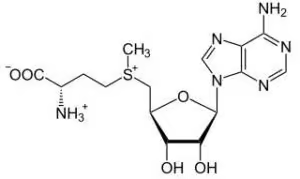
SAM-e is made from methionine and ATP (adenosine triphosphate) during a cycle that recycles the amino acid homocysteine. This cycle requires Vitamin B6 and B12 and folate (B9) to work properly.
SAM-e is a precursor to the crucial antioxidant glutathione which is used in your brain and liver. When glutathione levels drop in your body, liver damage from oxidative stress begins within seconds of exposure to alcohol or toxins.
SAM-e is a methyl donor that contributes to several essential processes in your brain. As a methyl donor, SAM-e is involved in the production and recycling of hormones, cytokines, and the neurotransmitters acetylcholine, dopamine, norepinephrine, and serotonin.
This methyl donor process is call ‘methylation’, and contributes to gene expression. Affecting how your cells work and communicate including your cell DNA.
SAM-e modifies important molecules in cell membranes that control communications within and between brain cells. SAM-e boosts the number of muscarinic receptors in certain parts of your brain which are critical to this cellular communications network.
SAM-e is used to treat depression, anxiety, osteoarthritis pain, fibromyalgia, and chronic liver disease.
SAM-e is sold as an OTC dietary supplement in the United States and Canada. And as a prescription drug in several European Union countries, and Russia. SAM-e is marketed under the brand names Adomet, Gumbaral, Samyr, Heptral, Agotan, Donamet, Isimet and Admethionine.
How does SAM-e work in the Brain?
SAM-e boosts brain health and function in several ways. But two in particular stand out.
- SAM-e helps alleviate depression. SAME-e is one of the main building blocks your brain needs to produce the neurotransmitters acetylcholine, dopamine, serotonin, norepinephrine and melatonin. By raising the levels of dopamine in your brain, SAM-e helps enhance memory, motivation and learning.
Researchers at the West Los Angeles VA Medical Center studied the antidepressant effect of oral SAM-e in a randomized, double-blind, placebo-controlled trial for 15 patients with major depression.
The researchers found that SAM-e is a safe, effective antidepressant with few side effects and a rapid onset of action. And may be useful for those who cannot tolerate prescription tricyclic antidepressants.[i]
- SAM-e directly influences neuronal signaling. SAM-e increases the number of muscarinic receptors in the hippocampus. We have two kinds of acetylcholine (ACh) receptors in our brain. 1) Nicotinic receptors and 2) Muscarinic receptors
Most of the nootropics we investigate here at Nootropics Expert influence nicotinic receptors and ACh. Muscarinic receptors have a very different mechanism of action. They are part of a large family of G-protein-coupled receptors (GPCRs) which are used as an intracellular secondary messenger system.
Your brain has a very complex system of control to regulate different processes going on in different cells at different times. For this to work, there must be a sophisticated means of communication between cells.
GPCRs and their G proteins provide this intercellular communication. And form one of the most important signaling systems in your brain. They are involved in nearly every aspect of your physiology and behavior.
G proteins work by binding neurotransmitters, hormones, growth factors, cytokines, odorants and photons at the cell surface to the GPCR, and activating that receptor. Everything you see, hear, smell, or taste goes through this signaling process.
And SAM-e increases the number of these muscarinic receptors in parts of your brain, including your hippocampus. In one study, aged rats were given SAM-e for 30 days. Supplementation with SAM-e restored the number of muscarinic receptors to levels found in the same areas in young animals.[ii]
Supplementing with SAM-e to increase muscarinic receptors in your brain can boost neuroplasticity and increase learning, memory, mood and even smell and vision.
How things go bad
You have healthy levels of SAM-e throughout your body when you’re young. But as you age, your body makes less of it. This is why young people bounce back from difficult experiences more easily. They’ve got higher levels of dopamine and a higher pain threshold than adults.
SAM-e is a major methyl donor in your body. It is involved in the biosynthesis of hormones, neurotransmitters, proteins and phospholipids.[iii]
SAM-e participates in a sequence of events involving folic acid (folate) and Vitamin B12. Folate converts to 5-MTHF (5-methyltetrahydrofolate) which converts freely circulating homocysteine back into the amino acid Methionine (using Vitamin B12). L-Methionine then binds to an Adenosine group from ATP to create SAM-e.
SAM-e is then able to donate methyl groups (called methylation) to a variety of reactions including the production and breakdown of the neurotransmitters dopamine, serotonin, norepinephrine and melatonin in your brain.
This methylation process degrades SAM-e into S-Adenosylhomocysteine. Which is then fed back into this cycle from the beginning. This process is referred to as a ‘one-carbon cycle’.
If you don’t have enough folate or Vitamin B12 available, this SAM-e methylation process breaks down. And the result can be depression, brain fog, poor recall and memory, and pain.
This lack of folate and Vitamin B12 can affect you regardless of age. This is a big enough problem that the Canadian government mandated folate fortification of all flour, and some corn and rice products to address this issue in 1998.[iv]
Low levels of SAM-e, methylfolate, Vitamin B6 and B12 can lead to all kinds of problems. And genetic defects that don’t allow the use of these important vitamins can result in the same symptoms.
↓ Cognition, memory, recall, and mood diminish
↓ Methylfolate, Vitamin B6 & B12 absorption declines
↑ Homocysteine levels rise
↑ Pain levels rise
↓ Mental health, language and fine motor skills decline
All of these changes in brain energy metabolism are contributing factors to neurodegenerative diseases, including Alzheimer’s, Parkinson’s, ALS, epilepsy, dementia, and other cognitive symptoms.
But even if you’re not concerned with genetic defects, a lack of B-Vitamins, or the effects of aging, SAM-e can help.
SAM-e benefits
Stress-related disorders like anxiety, major depression and PTSD are some of the most debilitating illnesses known to man. And if you’re reading this, and dealing with any of these, supplementing with SAM-e may help.
To cope with stress requires changes in the expression of “immediate-early genes” in your hippocampus. The same area of your brain you use for learning and memory.
Stressful events result in epigenetic (gene) modifications within ‘immediate-early genes’ in your hippocampus neurons. DNA methylation acts to suppress the expression of these genes. This is where SAM-e comes in…
SAM-e is a methyl donor for the enzyme that methylates your DNA. When SAM-e levels are high enough, a stressful event will not result in DNA de-methylation.
Instead, a stressful event enhances DNA methylation of ‘immediate-early genes’. Which suppress their expression and allows you to adapt in a healthy way to this stressful situation.[v]
SAM-e is a powerful antidepressant. In 2005, researchers combed through the databases of Medline, Psychinfo, AMED, and Cochrane Controlled Trials Register. And collated the findings of randomized, controlled trials studying SAM-e for depression through to September 2001.
The team concluded after analyzing all the clinical evidence that SAM-e was effective in treating major depression in adults.[vi]
SAM-e is also a potent pain-killer. A recent study looked at 56 people with arthritis in their knees for 16 weeks. One group took the COX-2 inhibitor Celebrex while the other group took SAM-e.
Researchers found that SAM-e was as effective as Celebrex at eliminating pain. And without the potential side effects of heart attack or stroke that can be caused by using Celebrex.[vii]
Another study on the effect of SAM-e with 17 fibromyalgia patients confirmed a close relationship between primary fibromyalgia and psychologic problems including depression.
SAM-e treatment improved the depressive state of these patients. And SAM-e was found to be an effective and safe therapy in the management of fibromyalgia.[viii]
How does SAM-e feel?
For some, supplementing with SAM-e can be life-changing.
SAM-e can have a profound effect on emotions, depression, and feelings of anxiety. You may experience improved concentration, energy, alertness, and feelings of well-being. Even vision can become clearer.
Once you start supplementing with SAM-e, you should experience at the very least, a general sense of well-being.
SAM-e works particularly well for those who deal with depression or anxiety. Neurohackers report that they no longer have panic attacks. And the feeling of doom is gone.
Adding SAM-e to your nootropic stack can improve sociability, and not feeling overwhelmed by life. Brain fog lifts and thinking is clearer and faster.
Others say that the “dark cloud has lifted”, and all the negativity and stress is gone. Things that normally would irritate are just brushed off, and you move on.
One big word of caution: SAM-e needs Vitamins B6 & B12 and folate to work. Or supplementing with SAM-e may be a waste of time and money because without adequate levels of these B-Vitamins it will not provide any benefit.
You’ll notice reference to B-Vitamins several times in this article on SAM-e. It is that important. Use Vitamin B6 & B12 and folate every day that you supplement with SAM-e. Or use a B-Complex formula that contains methylfolate (B9) (avoid folic acid).
SAM-e Clinical Research
SAM-e Lifts Mood
We have made significant progress in the last 100 years in diagnosing and treating depression. And yet, 10’s of millions still suffer from depression. In 2014, an estimated 15.7 million adults in the United States had at least one major depressive episode in the past year.[ix]
In the United States, one in ten Americans are using antidepressants.[x] I don’t have statistics from other countries but I suspect many have similar problems. Unfortunately, antidepressants only work 30 – 50% of the time. And often come with a host of side effects.
One reason that many people continue to suffer from depression is that most doctors are not aware of the link between homocysteine and depression.
If you’re dealing with depression and have had little success with antidepressants, you may have something as simple (and as serious) as a folate deficiency. Or low levels of Vitamin B12. Studies show a link between folate deficiency and impaired metabolism of serotonin, dopamine, and norepinephrine.
One study looked at 46 patients with severe depression. 24 of these patients had raised levels of homocysteine. And significantly lower levels of folate, SAM-e, and other metabolites.
The researchers concluded that looking at total homocysteine levels could be a measure of depression. When it is caused by a folate deficiency, impaired methylation (SAM-e), and poor neurotransmitter metabolism (SAM-e). And a potential benefit to simply using vitamin replacement to treat severe depression.[xi]
Or supplementing with SAM-e to treat depressive symptoms.
SAM-e for ADHD in Adults
Ritalin and Adderall are thought to be the most effective treatment in children and adults with ADHD. These stimulants work by potentiating both dopamine and norepinephrine at the synaptic cleft. But stimulant meds for ADHD come with side effects.
SAM-e acts as a methyl donor and is involved in many metabolic pathways. It has both adrenergic and dopamine receptor agonist activity.
A research team at the University of California used SAM-e with subjects diagnosed with Adult ADHD in a 9-week double-blind, placebo-controlled trial.
The research team found that 75% of the patients had a significant improvement in ADHD symptoms while using SAM-e. And the 25% who did not respond to SAM-e, did not respond to Ritalin either.[xii]
SAM-e Treats Depression
Scientists at the US Department of Health and Human Services conducted an analysis of 102 individual studies in 25 databases on SAM-e and depression in 2002. The report distilled data gleaned from published studies conducted around the world up to 2002.
This comprehensive report is called, “S-Adenosyl-L-Methionine for Treatment of Depression, Osteoarthritis, and Liver Disease.” The researchers found that SAM-e is just as effective as standard antidepressant drugs at treating depression.
The agency concluded, “Treatment with SAM-e was equivalent to standard therapy for depression”.[xiii]
SAM-e Recommended Dosage
Recommended dosage of SAM-e for nootropic benefit is 400 mg per day.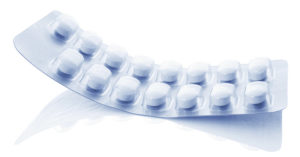
SAM-e for depression: 400 – 1600 mg daily in divided doses
SAM-e for bone and joint health: 200 – 1200 mg daily in divided doses
SAM-e for liver function issues: 1600 mg daily in divided doses
SAM-e for alcoholic liver disease: 600 – 1200 mg daily in divided doses
Some research and many user reports suggest that once positive effects are achieved, SAM-e doses can be reduced. Some report benefit with as little as 100 mg of SAM-e daily.
Studies show that SAM-e should be consumed with B-Vitamins. When SAM-e donates its methyl group, it breaks down into homocysteine. Elevated homocysteine levels are associated with increased heart disease, birth defects and depression.
Choose a bioactive B-Complex to use with SAM-e. Like the high quality B-Complex like Performance Lab® B-Complex which contains therapeutic amounts of each of the B-Vitamins you need while using SAM-e.
In order to prevent homocysteine accumulating, logic tells us based on its mechanism of action that sufficient levels of B-Vitamins must be present to convert homocysteine into the potent antioxidant glutathione.
Take SAM-e on an empty stomach and an hour before eating any food. SAM-e is best digested in your intestines and not your stomach. Not letting SAM-e settle into your digestive tract could cause stomach upset.
SAM-e Side Effects
SAM-e is produced naturally in your body. So is considered well-tolerated and safe.
If you have bipolar disorder, you could develop mania when supplementing with SAM-e. So check with your doctor before using SAM-e.
If you’re on antidepressant medication, you should check with your doctor before supplementing with SAM-e.
High doses of SAM-e can cause gas, upset stomach, diarrhea, constipation, dry mouth, headache, dizziness, anxiety or skin rashes. SAM-e may also trigger an allergic reaction in some people.
Type of SAM-e to buy
SAM-e is available in 200 and 400 mg tablets.
For optimal effects with SAM-e, stable, enteric-coated tablets are recommended. SAM-e should be taken on an empty stomach, either one hour before or two hours after meals.
SAM-e is highly unstable so check expiration dates. And you should get tablets that are packed in sealed, gel-packs for freshness.
Avoid SAM-e in powder form as you’ll likely be unsatisfied with the results.
Nootropics Expert Recommendation
SAM-e 400 mg per day
 I recommend using SAM-e as a nootropic supplement.
I recommend using SAM-e as a nootropic supplement.
Your body does make some SAM-e on its own. But SAM-e levels decrease as we age. And you cannot get SAM-e from food.
SAM-e is critical for the methylation process needed for making important neurotransmitters including acetylcholine, dopamine, serotonin, norepinephrine and melatonin.
SAM-e is also involved in the cycle which produces the critical antioxidant glutathione. And it’s involved in maintaining brain cell membrane integrity and fluidity.
SAM-e increases muscarinic receptors in your hippocampus which boosts the activity of acetylcholine and other critical neurotransmitters in your brain. Leading to improved learning, memory and mood.
SAM-e is especially helpful if you’re dealing with depression. Or having difficulty coping with any kind of stress.
We suggest a dose of 400 mg daily. It may take a while for SAM-e to build up in your system. So be patient. Once you’re achieving the affects you want from SAM-e, you can eventually try scaling back your dose to 100 or 200 mg.
SAM-e needs Vitamins B6 & B12 and folate to work. Or SAM-e may not provide the benefit you are looking for. Most integrative medicine doctors and naturopaths recommend stacking a high quality B-Complex when using SAM-e. So make sure you stack SAM-e with the B-Vitamins listed above, or a good Vitamin B Complex formula that uses methylfolate (NOT folic acid).
A high quality B-Complex containing these bioactive B-Vitamins like the Performance Lab® B-Complex .






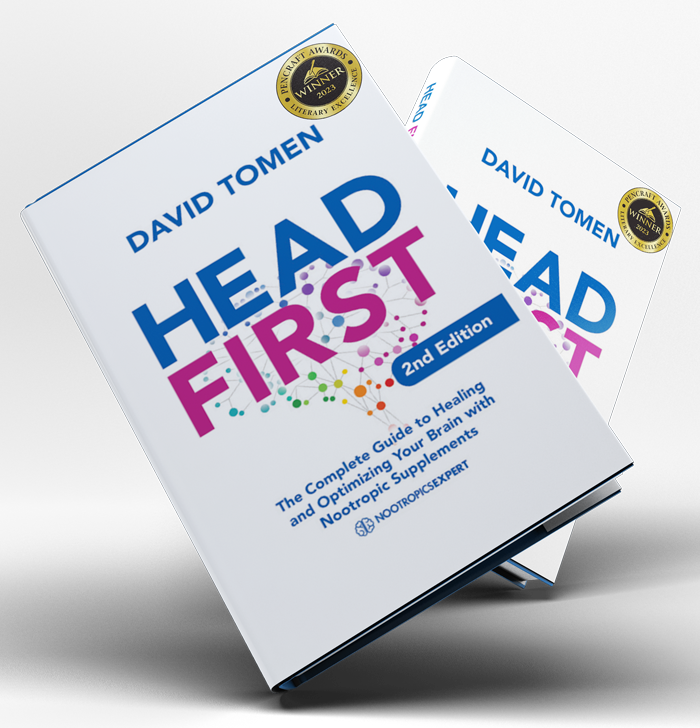
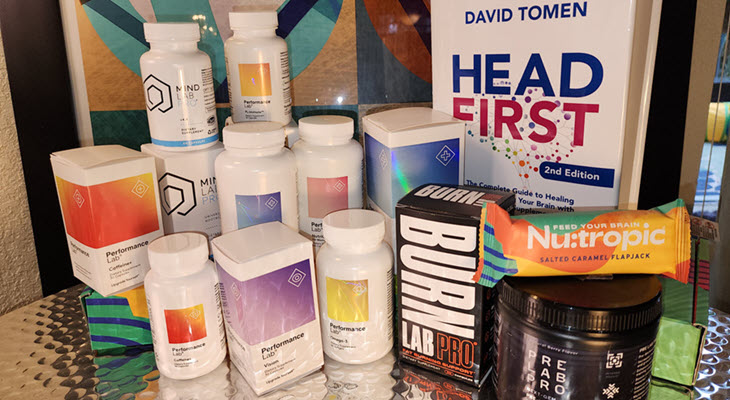
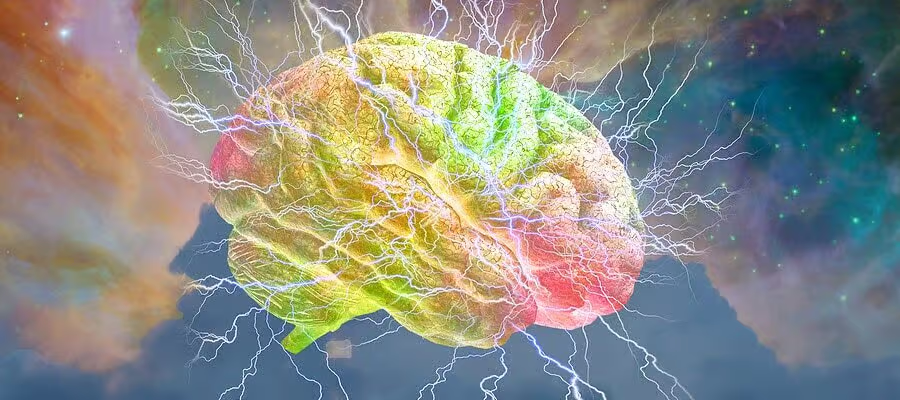
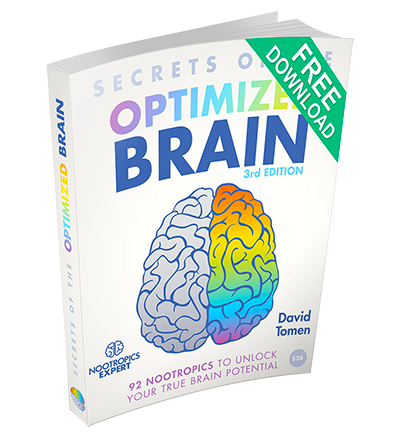
Join The Discussion - 404 comments
Michelle
April 25, 2020
Hi there – have you heard anything about combining SAMe with Alpha GPC? They both seem to raise serotonin levels, don’t they?
For brain fog SAMe could be combined with Phosphatidylserin can’t it?
David Tomen
April 25, 2020
Michelle, SAM-e is a cofactor in the synthesis and breakdown of serotonin. It does not “raise” serotonin levels but is needed to produce it.
Alpha GPC is a precursor in the synthesis of acetylcholine and has been found to help release more dopamine. But not serotonin.
If you’re trying to relieve brain fog I suggest reading this post: https://nootropicsexpert.com/best-supplements-for-brain-fog/
kelly batcha
April 20, 2020
Doctor’s best sam-e uses Soloesse, and says it provides a slow targeted release for improved absorption and digestion, does that mean it is time released? Some people react to time release products.
David Tomen
April 21, 2020
Kelly, Soloesse® is a patented form of SAM-e in enteric coated capsules which delays the release of SAM-e until it reaches your gut. Which does work better for some to experience the benefits of SAM-e.
Eddie
March 28, 2020
Hi David, your article mentions that one should take SAM-e one hour before meals. If I have to take a medication (Linzess) half an hour before a meal can I still take the SAM-e an hour before the meal or should I take it 1 hour before the medication? Thanks
David Tomen
March 29, 2020
Eddie, either way should work because both need to be taken on an empty stomach. It’s nearly always a wild card when inserting a prescription med into a stack. Especially one that may affect digestion. But there’s no other info on this combo as far as I can tell.
Eddie
March 29, 2020
Thanks David. I took my first SAM-e pill this morning and about an hour later took the Linzess. The only symptoms I got were a twitching in my shoulder and a flush feeling, like when you take niacin. There is niacin in the B-Complex I took but I normally take it with food. I took my second SAM-e an hour ago, and no symptoms. How long does it take before one finds out if SAM-e will make a difference?
David Tomen
March 30, 2020
Eddie, if SAM-e is going to work for you it should provide a general sense of wellbeing within an hour or so at the very least. I’d give it regular dosing for at least a few days for a fair trial before you decide if it’s for you or not.
Eddie
March 30, 2020
Thanks again.
Amy
March 26, 2020
Hi David. Thank you for the article. I am researching how to help fight my severe depression while pregnant. I feel like Sam-e seems like a good fit for me as a year ago I finally was able to quit using methamphetamine after four years of daily use. Do you have any thoughts on using small doses while pregnant? Thank you so much.
David Tomen
March 26, 2020
Amy, SAM-e is not contraindicated as far as I can tell for use while pregnant. It didn’t come up in my research. You can check with your doctor to be on the safe side.
Amy
March 26, 2020
Thank you for your time!
Eddie
March 24, 2020
You mention that “If you don’t have enough folate or Vitamin B12 available, the SAM-e methylation process breaks down. And the result can be depression, brain fog, poor recall and memory, and pain”. Since I have all these symptoms could this be caused by existing poor methylation?
You noted that SAM-e helps produce and breakdown the neurotransmitters acetylcholine, dopamine, serotonin, norepinephrine and melatonin in your brain. I have low serotonin, GABA and melatonin levels. Would taking SAM-e help balance my low serotonin/melatonin/GABA levels?
Also, you mentioned that Homocysteine levels could rise. Should I have my levels checked before I start the SAM-e or just test them after 3 months? I haven’t tested my Homocysteine levels since 2015 and they were 8.3 umol/L, on a reference range of 0.0-15.0 at that time.
In regards to SAM-e dosage, I want to begin taking one 200 mg pill before breakfast for a week to see how my body reacts. After a week I want to increase the dosage to a 200 mg pill in the morning and another an hour before lunch. I will include one Life Extension B-Complex pill with each SAM-e dosage.
Lastly, is there a possibility that SAM-e could improve my sleep?
Any comments are appreciated. Thanks
David Tomen
March 25, 2020
Eddie, your symptoms could be because of poor methylation. It’s estimated that up to 60% of people have one or more gene mutations that lead to methylation problems. SAM-e has some influence on neurotransmitter levels but it’s not possible to say whether using SAM-e will increase each of the neurotransmitters enough if they’re low. For that you’d likely need to use the direct precursor for each neurotransmitter that is low.
If you are following dosage recommendations including using a B-Complex then your homocysteine levels should be fine. Get it tested as you normally would.
SAM-e has been shown to relieve depression, anxiety, brain fog, and pain including arthritic and fibromyalgia pain, improve memory, mood and sociability, and support liver health. But it’s not used for sleep.
Eddie
March 25, 2020
Thanks David. If it helps me relieve the symptoms your mentioned that would be a major plus for me. Once other thing, is there anything that might help a low thyroid function? My thyroid panel is in “normal” ranges but not in optimal ranges. From what I’ve read, it appears that my T4 to T3 conversion is not optimal.
David Tomen
March 25, 2020
Effie, to support your thyroid please my review for iodine here: https://nootropicsexpert.com/iodine/. You need Iodine, selenium and L-Tyrosine to make thyroid hormones.
Eddie
March 25, 2020
Thanks David. I am already taking those supplements. Thinking about trying NDT.
Miles
March 10, 2020
Hi
Are there any known concerns or interactions between combining Sam-e and GABA?
David Tomen
March 11, 2020
Miles, no there aren’t as far as I can tell from my research.
Wim
February 1, 2020
thanks David on the reply of the others supplements.
SAM-e seems to be a complicated case:
“SAME-e is one of the main building blocks your brain needs to produce the neurotransmitters … norepinephrine”
“SAM-e is then able to donate methyl groups (called methylation) to a variety of reactions including the production and breakdown of the neurotransmitters … norepinephrine”
on my search to inhibit or breakdown of norepinephrine, I stumbled on this:
“Catechol-O-methyltransferase (COMT; EC 2.1.1.6) is one of several enzymes that degrade catecholamines …norepinephrine”
“The enzyme introduces a methyl group to the catecholamine, which is donated by S-adenosyl methionine” https://en.m.wikipedia.org/wiki/Catechol-O-methyltransferase
so in theory SAM-e helps enzyme COMT to breakdown norepinephrine.
you mentioned it can also be a building block for norepinephrine.
And you advice to take Vit.B complex with SAM-e (what I did for 1,5y) to prevent homocysteine increasing to much.
I did read on your pages that many of the vit.B’s are co-factors and/or stimulation to make norepinephrine.
David, how do you see this all with SAM-e, will it decrease or increase norepinephrine? Or is it so complex with the vit-B’s that its more rolling the dice for what it will be?
thanks in advance
David Tomen
February 2, 2020
Wim, I’ve tried to simplify the neuroscience in this review so anyone can understand. But as you point out it’s much more complex that it appears. However, on the subject you mention I encourage to read further down that page because it’s not as simple as inhibiting NE.
SAM-e is a cofactor involved in a ton of enzymatic reactions. And does work the B-Vitamins to complete these processes. If some of the B-Vitamins are not present or insufficient then other systems go haywire. Including raised homocysteine.
Jack
January 24, 2020
Hi David,
I’ve just started using the Performance Lab whole-food Multivitamin that you advised – so far it seems great! I’m also taking DHA, vit D, magnesium, shilajit, agmatine (cycled with citrulline) and pycnogenol.
One question: since the multi already contains all B vitamins in the best form, is it okay to take SAM-e (empty stomach before breakfast) + the Multivitamin (full stomach after breakfast), or should I take also a separate B Complex with higher dosages?
Thanks
David Tomen
January 24, 2020
Jack, for convenience I take them all together. Because the healthy fat helps deliver the fat-soluble vitamins and minerals. And the water-soluble nutrients get used as needed.
I do use a separate B-Complex just to be on the safe side because they are so critical. Most are water-soluble and in the methyl form so I don’t worry about toxicity if a get a little too much. So far that hasn’t been a problem and I’ve been doing this daily for years. But I split my B-Complex dose with half in the morning and the other half at noon. Because I have a bad skin reaction to niacin if I take more that 50 mg at a time.
Jack
January 24, 2020
Thanks mate.
So is it okay if I take the multivitamin and/or B complex empty stomach? I thought that they needed to take with food.
Since I’m trying to keep it simple and limit the number of total pills (and also the cost of my stack), do you think I could try to take the multi for the Bs and avoid the separate B complex for the moment, and see how I feel? Or is it too dangerous?
Otherwise I could put my multi in standby and take only the B complex, along with DHA, Vit D, shilajit, magnesium, pycnogenol and agmatine. I’m planning about trying also Performance Lab mind in the future.
David Tomen
January 24, 2020
Jack, depending on your age and state of overall health you should be able to get the B-Vitamins you need IF you’re using the Performance Lab Whole-Food Multi for men. That multi has B-Vitamins in it that are more bioavailable and higher amounts than other multi’s.
And the multivitamin needs to be taken with a healthy fat or meal because some of the vitamins and minerals are fat-soluble.
Jack
January 24, 2020
Awesome, it’s the multi I’m using.
I’ll take SAM-e before breakfast empty stomach and the multi after breakfast, together when Performance Lab Mind.
Thanks David, it’s incredible that you find the time to answer all the comments!
Ewa Seiler
February 5, 2020
Why avoiding Folic Acid?
David Tomen
February 5, 2020
Go to this review: https://nootropicsexpert.com/vitamin-b9-folate/. And scroll down to the “overview” section and start reading. All explained in that section.